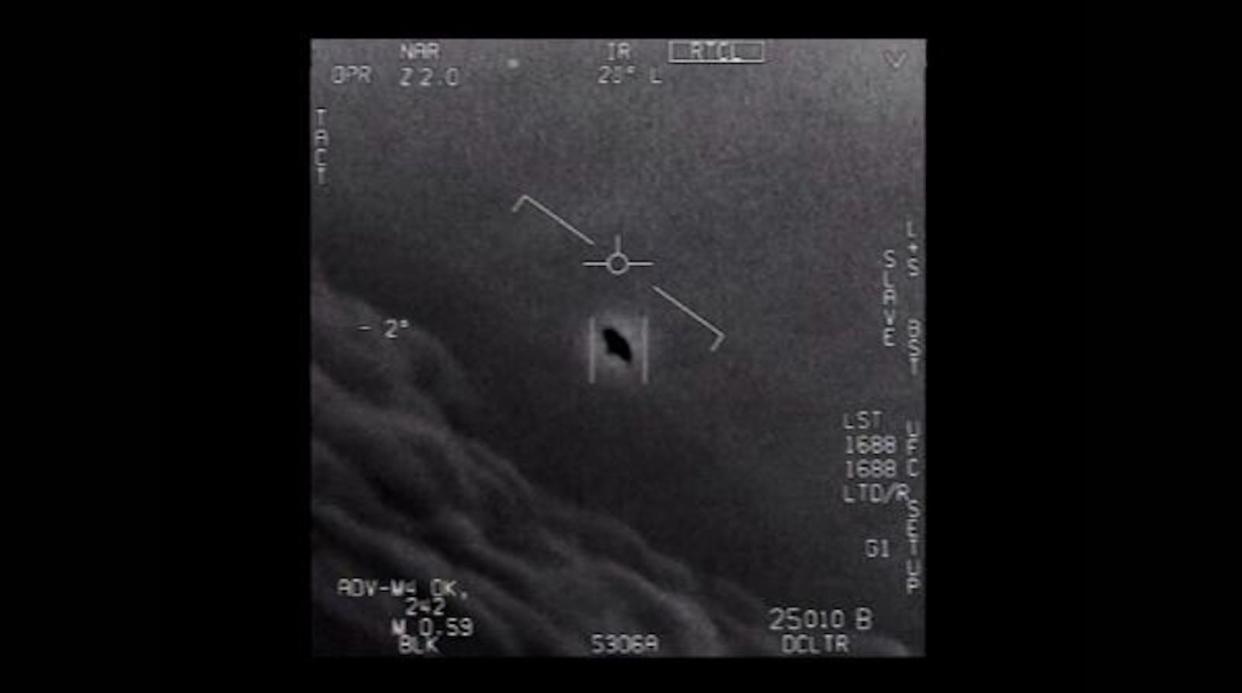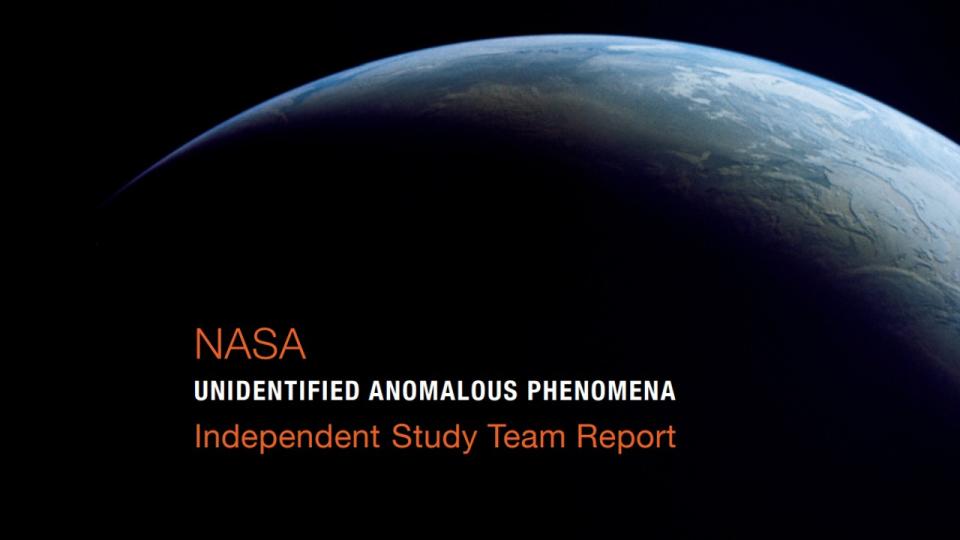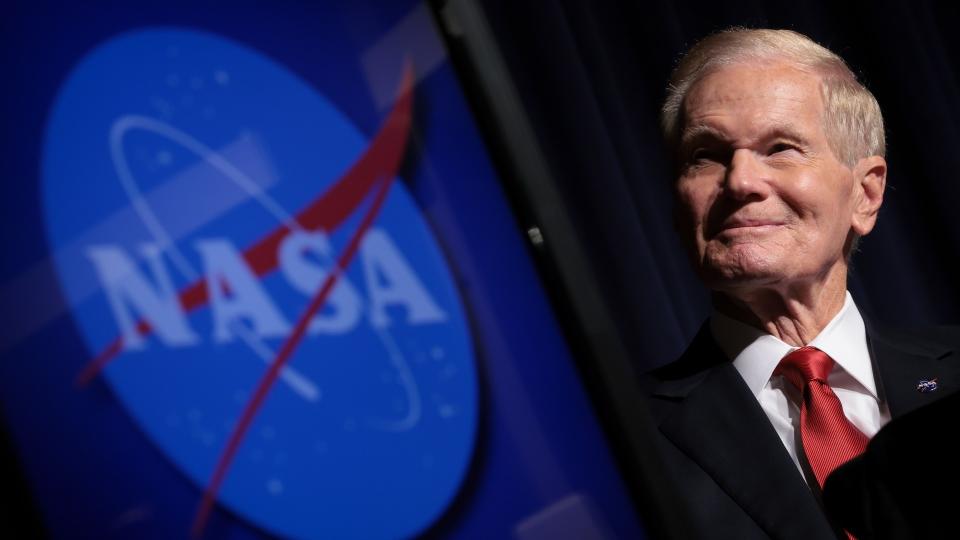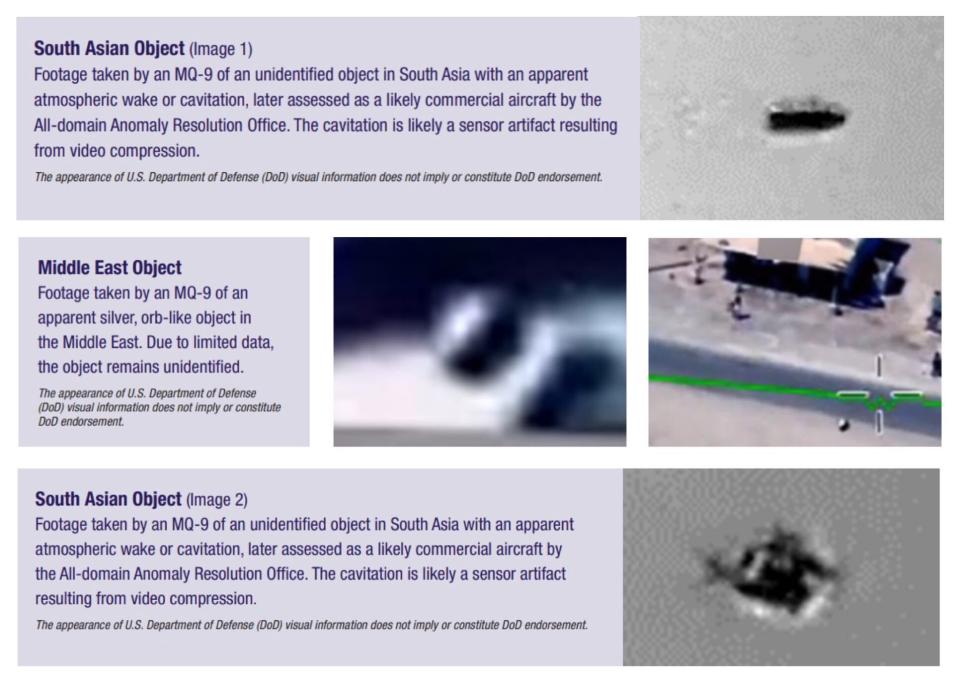NASA UFO report finds no evidence of 'extraterrestrial origin' for UAP sightings

NASA's UFO study team released its long-awaited first report today, and while its experts found no signs of extraterrestrial origins for reported sightings, the space agency is appointing a new chief to study the phenomenon.
NASA commissioned the independent panel of experts in 2022 in order to inform NASA and other government agencies how better data might be collected and analyzed in an attempt to understand UFOs, or unidentified anomalous phenomena (UAP), as they're now known (the term was adopted by the U.S. Department of Defense in order to encompass not only objects or events in the air that can't immediately be identified, but also those under water or in space or that travel between domains).
"The top takeaway from the study is that there is a lot more to learn," NASA Administrator Bill Nelson said Thursday (Sept. 14) while releasing the report. "The NASA independent study team did not find any evidence that UAP have an extraterrestrial origin, but we don't know what these UAP are."
To investigate further, NASA is appointing a director of UAP research to develop and oversee UAP research, Nelson announced. "We will use NASA expertise to work with other agencies to investigate UAPs," he said.
Related: UFOs will remain mysterious without better data, NASA study team says

NASA's UAP study team's first report does little to shine light on the UFO enigma, but offers recommendations on how NASA might be able to help move the topic forward. In its conclusion, the report argues that NASA can best contribute to the topic by leveraging its Earth observation satellites to help provide better data and evidence of UAP.
"At present, analysis of UAP data is hampered by poor sensor calibration, the lack of multiple measurements, the lack of sensor metadata, and the lack of baseline data," the report states. "Making a concerted effort to improve all aspects is vital, and NASA's expertise should be comprehensively leveraged as part of a robust and systematic data acquisition strategy within the whole-of-government framework."

During a press briefing held Thursday (Sept. 14) at NASA headquarters in Washington, D.C., Nelson described the lack of data surrounding the topic, adding that because UFO sightings are often unpredictable and fleeting, they are difficult to study scientifically.
"Think about it: Most UAP sightings result in very limited data. That makes it even more difficult to draw scientific conclusions about the nature of UAP," Nelson said during the briefing. "And so this independent study team brought together some of the world's leading scientists, data, and artificial intelligence experts, and aerospace safety specialists, all with a specific charge for me, which is to tell how to apply the full focus of science and data to UAP."

Other NASA leaders echoed this, noting that alleged UAP often remain unidentified solely due to the lack of clear data gathered on them. "UAP are one of our planet's greatest mysteries," said Nicola Fox, associate administrator for the agency's Science Mission Directorate. "While there are numerous eyewitness accounts and visuals associated with UAP, they're not consistent, they're not detailed, and they're not curated observations that can be used to make definitive scientific conclusions about the nature and the origin of UAP."
Meanwhile, Dan Evans, assistant deputy associate administrator for research at NASA's Science Mission Directorate, framed the agency's UAP study efforts in terms of airspace safety. "The presence of UAP raises serious concerns about the safety of our skies. And it's this nation's obligation to determine whether these phenomena pose any potential risks to airspace safety," Evans said. "Let's not forget that the first 'A' in NASA is aeronautics. So by understanding the nature of UAP, we can ensure that our skies remain a safe space for all."
To do this, the group's report recommends NASA should leverage the Federal Aviation Administration (FAA) and its own Aviation Safety Reporting System to help design identify data that could help shine a light on the UAP enigma. The document also recommends the use of artificial intelligence to help comb through massive data sets to identify possible anomalous phenomena.
The report also includes several images of alleged UAP, both those that have been identified and those that remain unexplained, including one that appears to show a metallic "orb-like" object flying without known methods of propulsion. "Due to limited data, the object remains unidentified," the report notes.

RELATED STORIES:
— UFOs worth investigating despite lack of 'real evidence,' former astronaut Scott Kelly says
— Pentagon has 'no credible evidence' of aliens or UFOs that defy physics
— NASA UFO study team includes former astronaut, scientists and more
By approaching the topic with serious scientific scrutiny, the report argues, the agency could help remove the taboos and stigma associated with the study of UFOs, which has long been viewed as pseudoscientific. "NASA's very involvement in gathering future data will play an important role in reducing stigma associated with UAP reporting, which very likely leads to data attrition at present," the report states. "NASA's long-standing public trust, which is essential for communicating findings about these phenomena to citizens, is crucial for destigmatizing UAP reporting and scientific research."
UFOs, or UAP, have been a focus of U.S. government scrutiny over the last several years due to former intelligence community personnel and military servicemembers coming forward to share what they claim are encounters with unidentified objects or anomalous phenomena in the skies.
Several former U.S. military aviators have gone public in news media and cable television documentary series in recent years about their sightings of objects that appear to defy conventional understanding of aerodynamics and materials science, behaving in ways that are difficult to explain with known technologies.
A former Pentagon intelligence officer and U.S. Air Force veteran even testified to a congressional subcommittee in July 2023 that the American government has been hiding evidence of crashed UAP and evidence of biological "non-human intelligence."
No conclusive proof of these claims has been put forward, but several members of the United States Congress have nonetheless been vocal in their support of investigating them. Despite these claims, the head of the Pentagon's new UFO study organization, the All-Domain Anomaly Resolution Office (AARO), testified to the United States Senate Committee on Armed Services in April 2023 that his office has "no credible evidence thus far of extraterrestrial activity, off-world technology or objects that defy the known laws of physics."
Editor's note: This story was updated at 11:15 a.m. ET to include comments from NASA leadership made in the agency's Sept. 14 media briefing.

